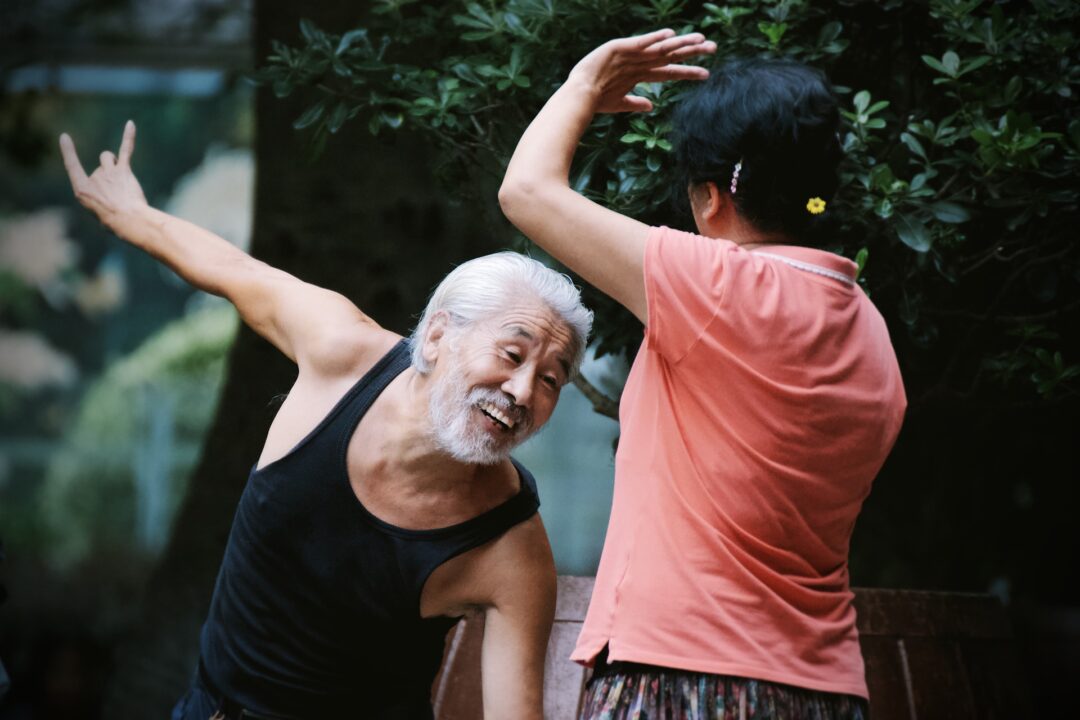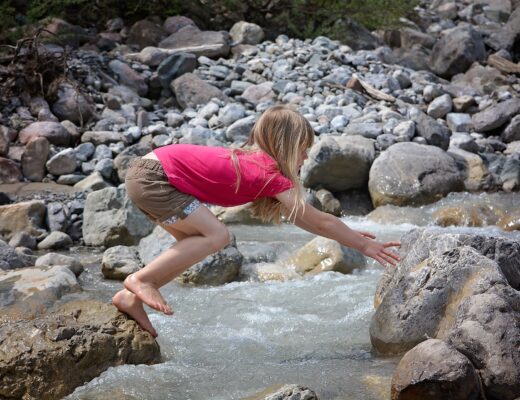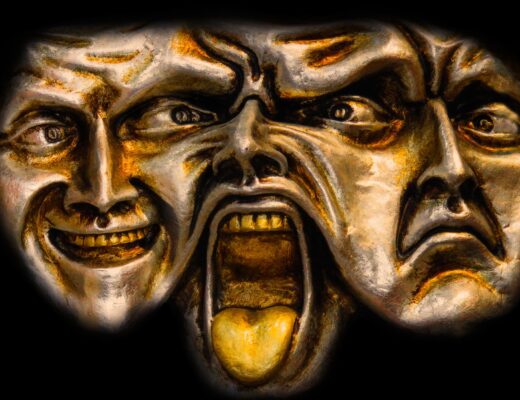Unique performances are memorable, right? That’s the ultimate goal for many actors, to be memorable in a positive way.
That is to say, by making each character you play different from the others, chances are you’re going to stand out. And this is something essential for actors, because, let’s be honest, there’s a lot of us running about.
Incorporating movement work into your craft is a fantastic way to do just that.
So, if you’ve spent any time studying the craft of acting you’ve most likely seen that there are many different approaches. There’s a lot of different methods out there such as Stanislavski, Meisner, Stella Adler, Method, Chekhov, and Uta Hagen to name only a few.
Now, different methods speak to different people, you may find one right off the bat that clicks for you, and then you run with it. That’s great!
However, in my opinion, it’s beneficial to learn an array of methods, because there’s always something to learn. Even if it’s learning that the method isn’t for you, that’s still valuable info.
I’ve found that keeping multiple methods in my toolbox only makes me more adaptable. One approach may work great for one role but not for the next.
Methods and movement
I use this approach for movement work.
Just as there are many varying approaches to acting, there are just as many paths to choose for movement work.
From Alexander technique to Suzuki and Viewpoints, all of these techniques are incredibly valuable to get your feet wet with. Doesn’t hurt to give ‘em a try.
However, for me, there is one method of movement analysis that has become a cornerstone of my craft. That’s what we’re gonna dive into in this post.
The work of Rudolf von Laban.
So, ready to start? Brilliant!
Enter Rudolf von Laban

Rudolf von Laban (1879-1958) was born into a military family in the Austro-Hungarian Empire (in what is now Slovakia). Therefore, because of his family history, a military path was paved for him, but, he decided to pursue dance instead.
His career was incredibly expansive. He was a dancer, choreographer, teacher, and theoretician among wearing countless other hats.
Visionary really feels like the most appropriate label to me personally.
He created a dance notation called Labanotation or Kinetography Laban, which is “a clear and concise language for describing human movement.”
By creating a vocabulary of movement and identifying these basic building blocks, Laban, for many movement students and actors is the key to create unique characters.
But, he was a dance guy, how can this Rudolf Laban help actors?
For the record, even if you have no desire whatsoever in dance in the classical sense, Laban’s work can still be of incredible benefit to you.
Seriously, I can’t emphasize enough, you don’t have to be a dancer to do this kind of work.
For the record, in my mind, dance and movement are two very different things. Well, more of a Venn diagram, really.
Laban’s notation system can help actors in one critical way: it gives us building blocks to create movement signatures.
A movement signature is simply an individual’s unique way of moving. We as humans each have our own movement signature, just like we all have unique fingerprints and one-of-a-kind DNA.
The characters we play therefore, also have their own movement signatures that are special to them.
So, what are these building blocks anyway?
Rudolf Laban’s basic building blocks
“Through observing and analyzing individual movement, Laban discovered most people have energetic qualities that are a result of an internal dynamic.” Barbara Sellers-Young: Breathing, Movement, Exploration (As a note, this is not an affiliate link, I won’t get anything if you get her book.)
There are four main categories: flow, weight, time and space. Each of the four categories contain opposites.
Something to keep in mind as you dive into these categories is to remember the scale of subtle to extreme. I like to think of movement as operating through a number of different dials. Dials you can keep at 0 or dial it up to 11.
One dial being subtle to extreme, another being one part of your body to your entire body.
You can choose to incorporate these building blocks any way you like. Honestly, experimentation is key here, have fun with it! Give it a shot and see what feels right for the character you’re building.
Alright, now let’s break down each category and get these Laban building blocks working for you.
Flow
Flow is the symphony of movements we carry out in our everyday lives. Basically, it’s our muscles moving together to perform any given task. Broken down into the extremes of free and bound.
Free is a movement that is difficult to stop; running water is a great example.
Bound is the stopping of a movement, inhibiting it somehow. Water that you pour into a glass has a flow to it that is free until it hits the confines of the glass.
I’ve found bound in particular to be incredibly helpful for characters who have an injury or carry a lot of tension in a particular part of their body.
A practical example is when I played Laura Wingfield in The Glass Menagerie. If you’re not familiar, the really short version is: Laura suffered a childhood illness that left one leg slightly shorter than the other. Depending on the production, Laura’s often wear a leg or foot brace or depict her disability in another way.
Bound became the core of my movement signature for portraying Laura. I chose to bind my left knee, to lock it and therefore, was unable to bend it. This then informed the rest of my body and how I/she then had to adapt to her environment.
Weight
Weight is our relationship to gravity. Do we get along with it? Resist it? This relationship may shift depending on our circumstances.
Weight breaks down into heavy/strong and light. Heavy/strong is a forceful action, a strong gesture, or standing your ground against gravity. Heavy/strong can be either internal or external or both.
Light then refers to a movement that doesn’t require much force and/or has very little tension.
Let’s say you’re on a hike on a windy day. Suddenly there’s a great gust of wind and you ground yourself so you don’t get knocked over. You resist the wind (heavy/strong) but you allow your arms to be carried by it (light).
Time
Time is all about duration and it breaks down into sudden and sustained. Sudden is a movement that is a short duration, usually on the faster side, not to mention there’s then some acceleration involved.
Sustained is a longer duration, longer acceleration, and deceleration.
So, a sustained movement lingers where as sudden one is gone in a flash.
Sudden is a great building block for more assertive and aggressive characters. Or ones who are quick to respond to things, and even type-A personalities.
Sustained I’ve found to be fun to use for carefree characters, those who are more calm, relaxed, and comfortable. It also pairs really well with flow’s free block. Put those two together and you’ve got the beginnings of a movement signature!
Space
Space is how we exist in the physical environment that constantly surrounds us. How we negotiate space is another great way to frame it.
Space breaks down into direct and indirect. This is a fun one and gives you a chance to play with other elements outside of your character and their relationship with the world around them. Direct can be an unwavering path you’ve set yourself on, getting to the point, or having blinders on.
Indirect is more of a meandering energy, even avoidance or spontaneous.
We constantly navigate through space. Think of your environment and social situations. Say you’re at a gathering and someone you don’t want to talk to begins to approach you from across the room. You may find a way to conveniently meander to somewhere else so that they never quite reach you (indirect). But, at the same gathering, you see a dear friend and you make a b-line for them (direct).
Rudolf Laban: an incredible tool for your toolbox
Whew! We made it! That’s a lot of info I just tossed your way.
So, long story short, Rudolf Laban’s building blocks are great places to start in creating a movement signature.
As a quick example, from the core categories above, let’s say you decided to work with the blocks of bound, sudden, and direct. What kind of character comes to mind? Would they be different from someone who used bound, sudden, and indirect?
There are no right or wrong answers. Acting is about creating and creating takes trying things out. You may find that a given character’s movement signature may shift as their story develops, they evolve, as we all do.
If you find Rudolf Laban’s work intriguing, inspiring, or simply awesome, I would highly recommend poking around the internet for more details about his life. He was truly innovative and continues to inspire creatives all over the world with his groundbreaking dance notation.
So, I’ll leave you with a quote from him:
“Existence is movement. Action is movement. Existence is defined by the rhythm and forces in natural balance.” Rudolf von Laban




